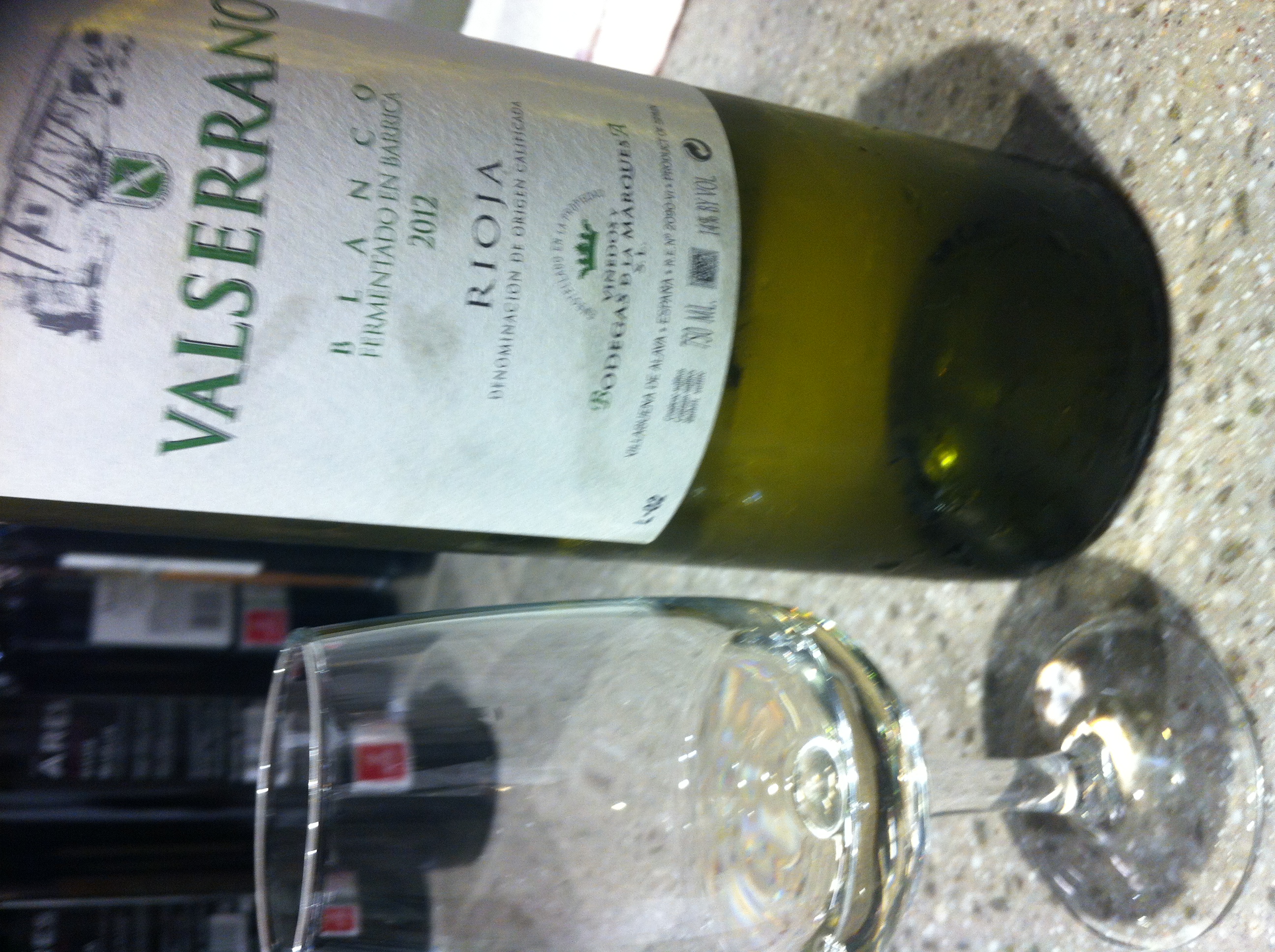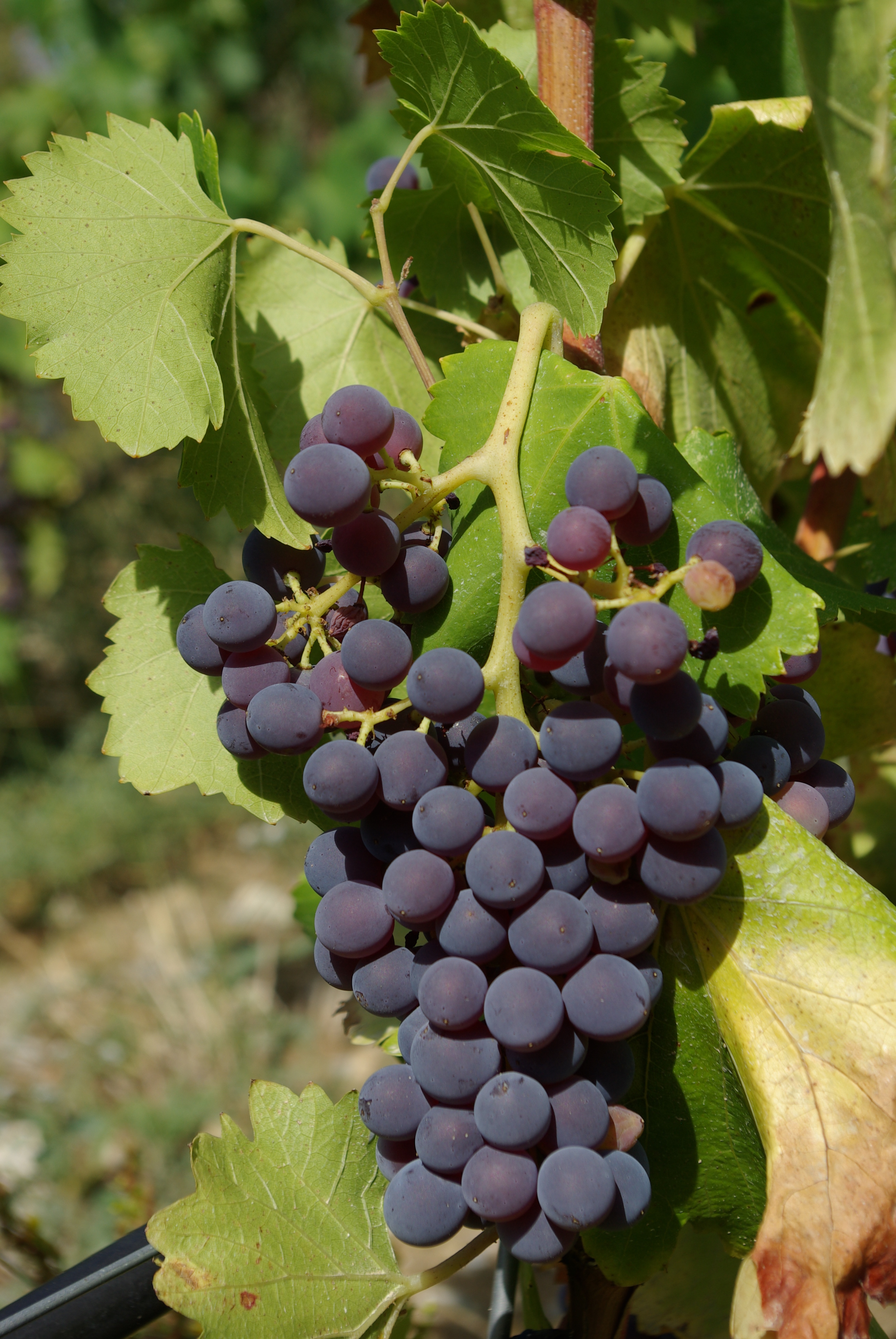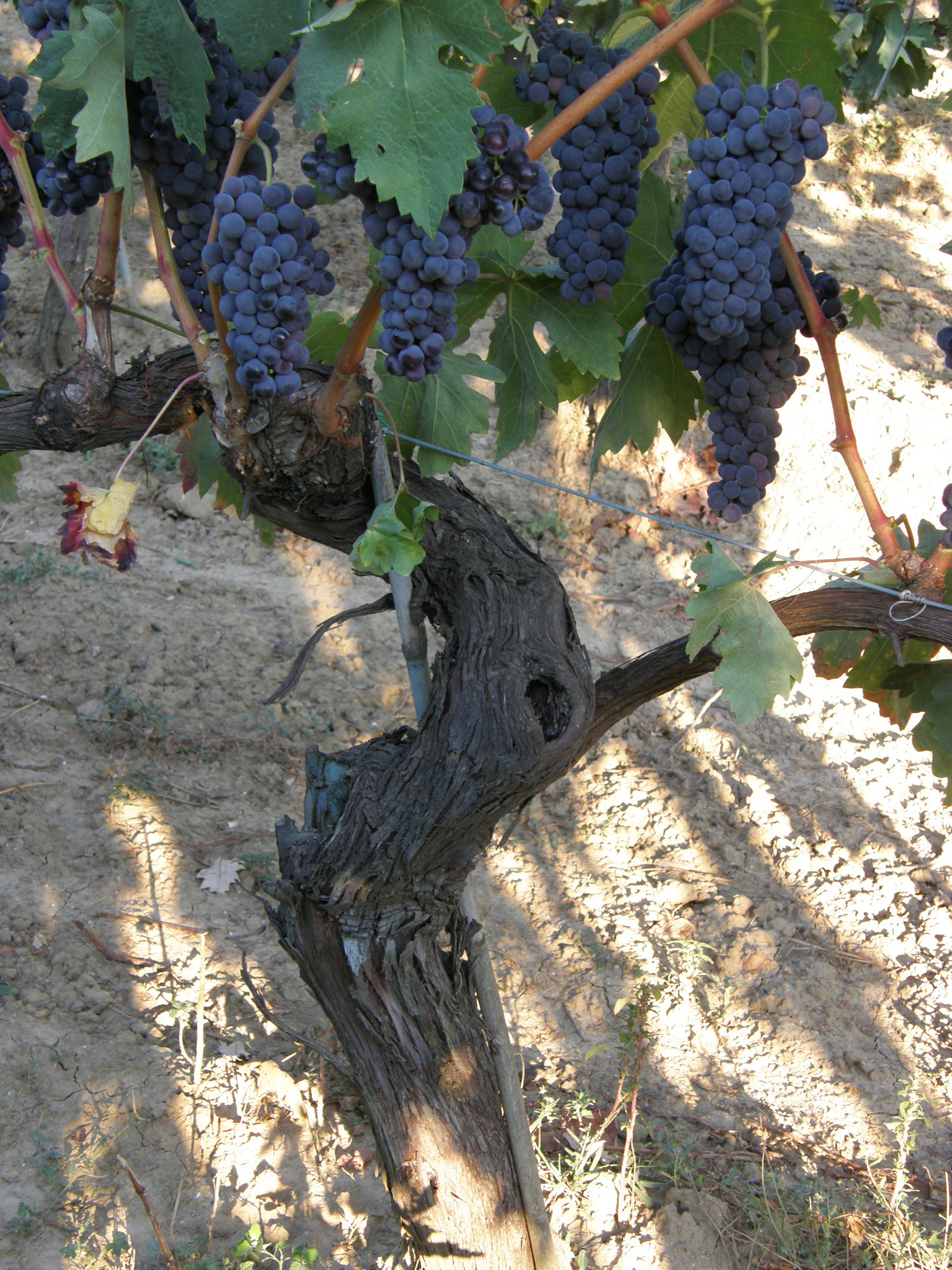|
Rueda, Valladolid
Rueda is a village and municipality in the province of Valladolid, part of the autonomous community of Castile-Leon, Spain. It is located 30 km southwest of the provincial capital, the city of Valladolid. The population is 1.614 This locality is also the center for the wine denomination Rueda (DO). The region produces white wines made with grape varieties like: Verdejo, Viura, Sauvignon blanc, while the authorised red varieties are Tempranillo, Cabernet Sauvignon, Merlot and Garnacha. See also *Rueda (DO) *Cuisine of the province of Valladolid The gastronomy of the province of Valladolid comprises the meals, their preparation, and the culinary habits of the province of Valladolid. It is based on barbecued and roast food, especially roasted Spanish cuisine. Wines of high qualit ... References External links The wine region DO Rueda Municipalities in the Province of Valladolid {{Valladolid-geo-stub ... [...More Info...] [...Related Items...] OR: [Wikipedia] [Google] [Baidu] |
Province Of Valladolid
Valladolid () is a Provinces of Spain, province of northwest Spain, in the central part of the Autonomous communities of Spain, autonomous community of Castile-Leon, Castile and León. It has a population of 520,716 people in a total of 225 municipalities, an area of and a population density of 64.19 people per km2. The capital is the city of Valladolid. It is bordered by the provinces of Zamora (province), Zamora, León (province), León, Palencia (province), Palencia, Burgos (province), Burgos, Segovia (province), Segovia, Ávila (province), Ávila, and Salamanca (province), Salamanca. It is thus the only Spanish province surrounded entirely by other provinces of the same autonomous community. It is the only peninsular province which has no mountains. Because the extensive plain on which the province lies is strategically important to overland transport, it is a major communications hub. From a national point of view it connects Madrid with the north of Spain, from Vigo in Gali ... [...More Info...] [...Related Items...] OR: [Wikipedia] [Google] [Baidu] |
Valladolid
Valladolid () is a Municipalities of Spain, municipality in Spain and the primary seat of government and de facto capital of the Autonomous communities of Spain, autonomous community of Castile and León. It is also the capital of the province of Valladolid, province of the same name. It has a population around 300,000 people (2021 est.). Population figures from 1 January 2013. The city is located roughly in the centre of the northern half of the Iberian Peninsula's Meseta Central, at the confluence of the Pisuerga River, Pisuerga and Esgueva rivers before they join the Duero, surrounded by winegrowing areas. The area was settled in pre-Roman times by the Celtic Vaccaei people, and then by Ancient Rome, Romans themselves. The settlement was purportedly founded after 1072, growing in prominence within the context of the Crown of Castile, being endowed with fairs and different institutions such as a collegiate church, University of Valladolid, University (1241), Court (royal), Ro ... [...More Info...] [...Related Items...] OR: [Wikipedia] [Google] [Baidu] |
Grenache
Grenache () or Garnacha () is one of the most widely planted red wine grape varieties in the world. Niels Lillelund: ''Rhône-Vinene'' p. 25, JP Bøger – JP/Politikens Forlagshus A/S, 2004. . It ripens late, so it needs hot, dry conditions such as those found in Spain, where the grape most likely originated. It is also grown in the Italian island of Sardinia, the south of France, Australia, and California's Monterey AVA and San Joaquin Valley. It is generally spicy, berry-flavored and soft on the palate and produces wine with a relatively high alcohol content, but it needs careful control of yields for best results. Characteristic flavor profiles on Grenache include red fruit flavors (raspberry and strawberry) with a subtle, white pepper spice note. Grenache wines are highly prone to oxidation, with even young examples having the potential to show browning (or "bricking") coloration that can be noticed around the rim when evaluating the wine at an angle in the glass. As ... [...More Info...] [...Related Items...] OR: [Wikipedia] [Google] [Baidu] |
Merlot
Merlot is a dark blue–colored wine grape variety, that is used as both a blending grape and for varietal wines. The name ''Merlot'' is thought to be a diminutive of ''merle'', the French name for the blackbird, probably a reference to the color of the grape. Its softness and "fleshiness," combined with its earlier ripening, make Merlot a popular grape for blending with the sterner, later-ripening Cabernet Sauvignon, which tends to be higher in tannin. Along with Cabernet Sauvignon, Cabernet Franc, Malbec and Petit Verdot, Merlot is one of the primary grapes used in Bordeaux wine, and it is the most widely planted grape in the Bordeaux wine regions. Merlot is also one of the most popular red wine varietals in many markets. This flexibility has helped to make it one of the world's most planted grape varieties. As of 2004, Merlot was estimated to be the third most grown variety at globally.J. Robinson (ed) ''The Oxford Companion to Wine'' Third Edition, Oxford University Pre ... [...More Info...] [...Related Items...] OR: [Wikipedia] [Google] [Baidu] |
Cabernet Sauvignon
Cabernet Sauvignon () is one of the world's most widely recognized red wine grape varieties. It is grown in nearly every major wine producing country among a diverse spectrum of climates from Australia and British Columbia, Canada to Lebanon's Beqaa Valley. Cabernet Sauvignon became internationally recognized through its prominence in Bordeaux wines, where it is often blended with Merlot and Cabernet Franc. From France and Spain, the grape spread across Europe and to the New World where it found new homes in places like California's Santa Cruz Mountains, Paso Robles, Napa Valley, New Zealand's Hawke's Bay, South Africa's Stellenbosch region, Australia's Margaret River, McLaren Vale and Coonawarra regions, and Chile's Maipo Valley and Colchagua. For most of the 20th century, it was the world's most widely planted premium red wine grape until it was surpassed by Merlot in the 1990s. However, by 2015, Cabernet Sauvignon had once again become the most widely planted wine gra ... [...More Info...] [...Related Items...] OR: [Wikipedia] [Google] [Baidu] |
Tempranillo
Tempranillo (also known as Ull de Llebre, Cencibel, Tinto Fino and Tinta del Pais in Spain, Aragonez or Tinta Roriz in Portugal, and several other synonyms elsewhere) is a black grape variety widely grown to make full-bodied red wines in its native Spain. Its name is the diminutive of the Spanish ''temprano'' ("early"), a reference to the fact that it ripens several weeks earlier than most Spanish red grapes. Tempranillo has been grown on the Iberian Peninsula since the time of Phoenician settlements. It is the main grape used in Rioja, and is often referred to as Spain's noble grape. The grape has been planted throughout the globe's wine regions. In 2015, Tempranillo was the fourth most widely planted wine grape variety worldwide with under vine, of which 87% was in Spain where it is the most planted red grape variety. Unlike more aromatic red wine varieties like Cabernet Sauvignon, Sangiovese and Pinot noir, Tempranillo has a relatively neutral profile so it is often b ... [...More Info...] [...Related Items...] OR: [Wikipedia] [Google] [Baidu] |
Sauvignon Blanc
is a green-skinned grape variety that originates from the Bordeaux region of France. The grape most likely gets its name from the French words ''sauvage'' ("wild") and ''blanc'' ("white") due to its early origins as an indigenous grape in South West France. It is possibly a descendant of Savagnin. is planted in many of the world's wine regions, producing a crisp, dry, and refreshing white varietal wine. The grape is also a component of the famous dessert wines from Sauternes and Barsac. Sauvignon blanc is widely cultivated in France, Chile, Romania, Canada, Australia, New Zealand, South Africa, Bulgaria, the states of Oregon, Washington, and California in the US. Some New World Sauvignon blancs, particularly from California, may also be called "Fumé Blanc", a marketing term coined by Robert Mondavi in reference to Pouilly-Fumé. Depending on the climate, the flavor can range from aggressively grassy to sweetly tropical. In cooler climates, the grape has a tendency to pr ... [...More Info...] [...Related Items...] OR: [Wikipedia] [Google] [Baidu] |
Viura
Macabeo, also called Viura or Macabeu (, ), is a white variety of wine grape. It is widely grown in the Rioja region of northeastern Spain, the Cava producing areas south of Barcelona, and the Languedoc-Roussillon region of France. Spanish plantations stood at nearly in 2015, making it the second most grown white grape variety in Spain. In France, plantations accounted for in 2007. Since 2009, some Macabeo is grown in Israel. Styles and winemaking  The grape is mostly used to make mildly acidic and young white wines mostly suitable for early co ...
The grape is mostly used to make mildly acidic and young white wines mostly suitable for early co ...
[...More Info...] [...Related Items...] OR: [Wikipedia] [Google] [Baidu] |
Verdejo
Verdejo is a variety of wine grape that has long been grown in the Rueda region of Spain. The grape originated in North Africa, and was spread to Rueda in about the 11th Century, possibly by Mozarabs. Verdejo was generally used to make a strongly oxidized, Sherry-like wine. In the Mid-20th Century, Verdejo almost became extinct, had it not been for the local winegrower Ángel Rodríguez Vidal (Bodega Martinsancho), who opted for this variety and contributed to re-establishing its prominence in the region. In the 1970s, the winemaking company Marqués de Riscal began to develop a fresher style of white wine based on Verdejo with the help of French oenologist Émile Peynaud.Asimov, Eric (2008)"Wines of the Times: Emerging, in Spain, to Warm Applause" ''The New York Times'', March 5, 2008. Online version retrieved 2008-03-07. In 1980, white wines from the Rueda region were recognized by a Denominación de Origen (DO). Wines labeled ''Rueda'' must contain 50% Verdejo; the remaind ... [...More Info...] [...Related Items...] OR: [Wikipedia] [Google] [Baidu] |
White Wines
White wine is a wine that is fermented without skin contact. The colour can be straw-yellow, yellow-green, or yellow-gold. It is produced by the alcoholic fermentation of the non-coloured pulp of grapes, which may have a skin of any colour. White wine has existed for at least 4,000 years. The wide variety of white wines comes from the large number of varieties, methods of winemaking, and ratios of residual sugar. White wine is mainly from "white" grapes, which are green or yellow in colour, such as the Chardonnay, Sauvignon blanc and Riesling. Some white wine is also made from grapes with coloured skin, provided that the obtained wort is not stained. Pinot noir, for example, is commonly used to produce champagne. Among the many types of white wine, dry white wine is the most common. More or less aromatic and tangy, it is derived from the complete fermentation of the wort. Sweet wines, on the other hand, are produced by interrupting the fermentation before all the grape sugar ... [...More Info...] [...Related Items...] OR: [Wikipedia] [Google] [Baidu] |
Rueda (DO)
Rueda is a Spanish Denominación de Origen Protegida (DOP) for wines located in the Community of Castile and León. It comprises 72 municipalities, of which 53 are in the province of Valladolid, 17 are in the north of the province of Segovia, and 2 are in the north of the province of Ávila."Denominación de Origen Rueda" webpage of . Retrieved March 7, 2008. It is one of Spain's leading wine regions, and is known primarily for its white wines based on the grape. History [...More Info...] [...Related Items...] OR: [Wikipedia] [Google] [Baidu] |
Wine
Wine is an alcoholic drink typically made from fermented grapes. Yeast consumes the sugar in the grapes and converts it to ethanol and carbon dioxide, releasing heat in the process. Different varieties of grapes and strains of yeasts are major factors in different styles of wine. These differences result from the complex interactions between the biochemical development of the grape, the reactions involved in fermentation, the grape's growing environment (terroir), and the wine production process. Many countries enact legal appellations intended to define styles and qualities of wine. These typically restrict the geographical origin and permitted varieties of grapes, as well as other aspects of wine production. Wines not made from grapes involve fermentation of other crops including rice wine and other fruit wines such as plum, cherry, pomegranate, currant and elderberry. Wine has been produced for thousands of years. The earliest evidence of wine is from the Caucasus ... [...More Info...] [...Related Items...] OR: [Wikipedia] [Google] [Baidu] |







